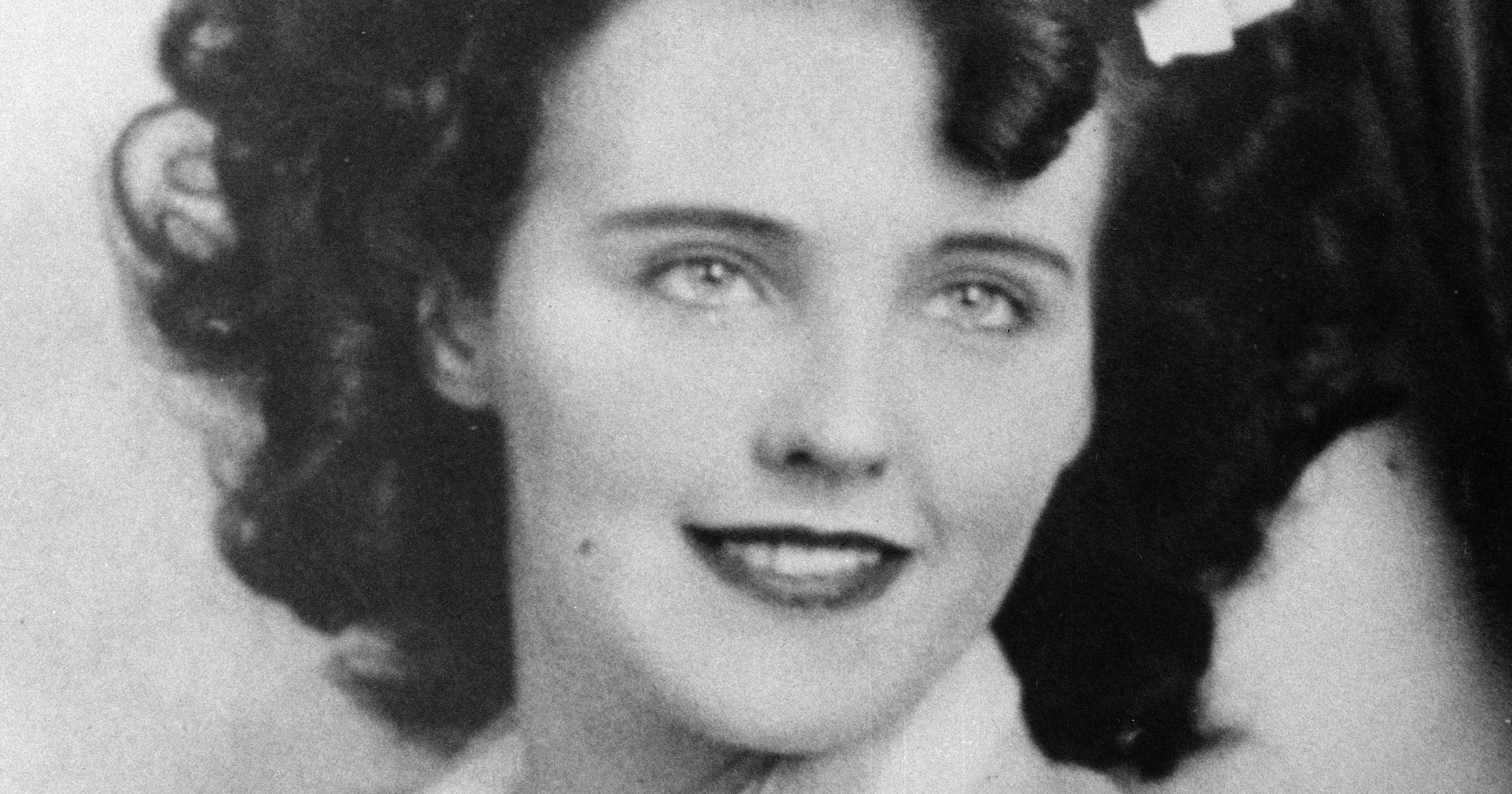The Black Dahlia murder case remains one of the most infamous unsolved crimes in American history. The gruesome details of Elizabeth Short's murder have captivated the public for decades, leaving behind a chilling mystery that continues to intrigue true crime enthusiasts worldwide. This article dives deep into the events surrounding the Black Dahlia murder scene, exploring the facts, theories, and enduring legacy of this tragic case.
The Black Dahlia murder scene is often regarded as a macabre masterpiece of crime, with its grisly details and unanswered questions. This case has inspired countless books, movies, and documentaries, each attempting to unravel the mystery behind Elizabeth Short's untimely death. The case's notoriety stems from the brutal nature of the crime and the lack of a definitive resolution, making it a subject of endless speculation.
As we delve into the Black Dahlia murder scene, we aim to provide a comprehensive analysis of the events leading up to the crime, the investigation process, and the cultural impact of this case. By examining the evidence, exploring various theories, and consulting expert opinions, we hope to shed light on one of the darkest chapters in criminal history.
Read also:Pima Assessor A Comprehensive Guide To Understanding And Excelling In Property Assessments
Table of Contents
- Biography of Elizabeth Short
- Crime Scene Details
- Investigation Process
- Forensic Analysis of the Black Dahlia Murder Scene
- Theories Surrounding the Black Dahlia Murder
- Cultural Impact of the Black Dahlia Murder
- Psychological Profile of the Suspect
- Media Coverage and Public Reaction
- Modern Perspective on the Black Dahlia Murder Scene
- Conclusion
Biography of Elizabeth Short
Elizabeth Short, known posthumously as the Black Dahlia, was born on July 29, 1924, in Boston, Massachusetts. Her life was marked by a series of challenges and relocations, which ultimately led her to Los Angeles, where her tragic fate awaited her.
Personal Information
| Name | Elizabeth Short |
|---|---|
| Birthdate | July 29, 1924 |
| Birthplace | Boston, Massachusetts |
| Occupation | Aspiring Actress |
| Date of Death | January 14, 1947 |
| Place of Death | Los Angeles, California |
Elizabeth Short moved frequently during her lifetime, seeking opportunities in the entertainment industry. Her aspirations to become an actress brought her to Los Angeles, where she hoped to achieve fame and success. However, her life was cut tragically short, leaving behind a legacy of mystery and intrigue.
Crime Scene Details
The Black Dahlia murder scene was discovered on January 15, 1947, in a vacant lot near Leimert Park, Los Angeles. The gruesome discovery shocked the nation and set the stage for one of the most infamous unsolved crimes in history.
Key Details of the Crime Scene
- Elizabeth Short's body was found in a vacant lot, neatly arranged in a pose that suggested meticulous planning.
- Her body was severed at the waist, with the upper and lower halves separated by a small distance.
- Her face was grotesquely mutilated, with a gash cut from ear to ear, resembling a grimacing smile.
- There was no blood at the scene, leading investigators to believe that the murder did not occur at this location.
According to FBI records, the crime scene was meticulously staged, with the perpetrator likely transporting the body to the vacant lot after committing the murder elsewhere. This detail adds to the complexity of the case, making it even more challenging for investigators to piece together the events leading up to Elizabeth's death.
Investigation Process
The investigation into the Black Dahlia murder scene was extensive, involving numerous law enforcement agencies and a wide range of investigative techniques. Despite their efforts, the case remains unsolved to this day.
Initial Investigation Steps
- Law enforcement officers meticulously documented the crime scene, taking photographs and collecting evidence.
- Witnesses were interviewed, and leads were pursued, but none led to a conclusive identification of the perpetrator.
- Forensic analysis of the crime scene revealed crucial details about the murder, including the absence of blood at the site.
According to a report by the Los Angeles Police Department, over 50 suspects were investigated in connection with the Black Dahlia murder. However, none of these investigations resulted in a conviction, leaving the case open and unresolved.
Read also:Liam And Chris Hemsworth Brothers A Comprehensive Look Into Their Lives Careers And Bond
Forensic Analysis of the Black Dahlia Murder Scene
Forensic science played a crucial role in analyzing the Black Dahlia murder scene, providing valuable insights into the nature of the crime and the methods used by the perpetrator.
Key Findings from Forensic Analysis
- Autopsy reports revealed that Elizabeth Short had been subjected to severe physical trauma before her death.
- Forensic experts determined that the murder likely occurred elsewhere, with the body transported to the vacant lot for disposal.
- Trace evidence found at the scene, including soil samples, provided clues about the possible location of the murder.
Modern forensic techniques, such as DNA analysis, were not available at the time of the investigation. However, advancements in forensic science have since been applied to the case, offering new possibilities for solving this decades-old mystery.
Theories Surrounding the Black Dahlia Murder
The Black Dahlia murder case has generated numerous theories over the years, each attempting to explain the motives and identity of the killer. While none have been conclusively proven, they provide intriguing perspectives on the case.
Popular Theories
- The Jilted Lover Theory: Some believe that Elizabeth's killer was a former lover or admirer who became obsessed with her and ultimately snapped.
- The Serial Killer Theory: Others speculate that the Black Dahlia murder was the work of a serial killer who targeted young women in the Los Angeles area during the 1940s.
- The Mob Connection Theory: A third theory suggests that Elizabeth's death was linked to organized crime, possibly as a result of her involvement with dangerous individuals.
While these theories provide plausible explanations for the crime, none have been substantiated by concrete evidence, leaving the case open to interpretation.
Cultural Impact of the Black Dahlia Murder
The Black Dahlia murder case has had a profound impact on popular culture, inspiring countless works of art, literature, and film. The grisly details of the crime have captivated audiences for decades, ensuring that Elizabeth Short's legacy endures.
Cultural References
- The case has been the subject of numerous books, including "The Black Dahlia" by James Ellroy, which fictionalizes the events surrounding the murder.
- Several films, such as "The Black Dahlia" (2006), have brought the story to life on the big screen, captivating audiences with its chilling narrative.
- True crime podcasts and documentaries have also explored the case, offering new insights and perspectives for modern audiences.
The cultural impact of the Black Dahlia murder scene extends beyond entertainment, serving as a reminder of the importance of justice and the need to solve unsolved crimes.
Psychological Profile of the Suspect
Psychologists and criminologists have attempted to construct a psychological profile of the Black Dahlia killer, using the evidence from the crime scene and the nature of the murder to infer possible traits and motivations.
Potential Traits of the Killer
- A high degree of intelligence and meticulous planning, as evidenced by the staging of the crime scene.
- A potential history of violence or mental instability, suggested by the severity of the mutilations inflicted on Elizabeth Short.
- A possible obsession with control and power, indicated by the deliberate posing of the victim's body.
While these traits offer a glimpse into the mind of the killer, they remain speculative in nature, as the true identity of the perpetrator remains unknown.
Media Coverage and Public Reaction
The Black Dahlia murder case garnered extensive media coverage at the time of the crime, with newspapers and radio broadcasts providing daily updates on the investigation. The public's fascination with the case was fueled by the gruesome details of the murder and the lack of a resolution.
Impact of Media Coverage
- The extensive media coverage of the case helped to raise awareness about the dangers faced by young women in urban areas during the 1940s.
- Public interest in the case contributed to the development of modern forensic techniques and investigative methods.
- The case also highlighted the need for improved communication and cooperation between law enforcement agencies in solving complex crimes.
While media coverage played a crucial role in informing the public about the case, it also contributed to the widespread speculation and misinformation that surrounded the investigation.
Modern Perspective on the Black Dahlia Murder Scene
In the modern era, the Black Dahlia murder case continues to captivate audiences, with new technologies and investigative methods offering fresh possibilities for solving the case. Advances in forensic science and digital archiving have provided researchers with new tools to analyze the evidence and explore potential leads.
Modern Investigations
- Recent efforts to revisit the case have included the use of DNA analysis and facial reconstruction techniques to identify potential suspects.
- Archival research has uncovered new documents and photographs related to the investigation, offering fresh insights into the events surrounding the crime.
- Collaboration between law enforcement agencies and forensic experts has led to renewed interest in solving the case and bringing justice to Elizabeth Short's family.
While the case remains unsolved, modern advancements in technology and investigative techniques offer hope for a resolution in the future.
Conclusion
The Black Dahlia murder scene remains one of the most perplexing and tragic cases in criminal history. From the grisly details of the crime to the enduring legacy of Elizabeth Short, this case continues to captivate audiences worldwide. By examining the evidence, exploring various theories, and consulting expert opinions, we have gained a deeper understanding of the events surrounding this infamous crime.
As we reflect on the Black Dahlia murder case, we are reminded of the importance of justice and the need to solve unsolved crimes. We invite you to share your thoughts and theories in the comments section below, and to explore other articles on our website that delve into the fascinating world of true crime.


